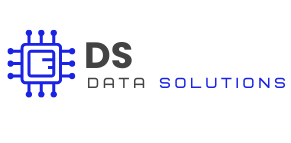Introduction
Lead generation is the lifeblood of any sales-driven organization. The ability to consistently identify and engage potential customers is crucial for maintaining a steady pipeline of opportunities. However, manually collecting leads from various sources can be time-consuming and inefficient. This is where web scraping comes into play. By automating the process of gathering contact information, social media profiles, and other relevant data from websites and directories, web scraping can significantly enhance your lead generation efforts. In this article, we’ll explore how to automate lead generation with web scraping, helping sales teams, lead generation specialists, and business development professionals streamline their workflows and maximize their outreach efforts.
Why Automate Lead Generation?
Manual lead generation can be labour-intensive, prone to errors, and difficult to scale. Automating the process with web scraping offers several key benefits:
- Efficiency: Automate repetitive tasks, freeing up time for more strategic activities like nurturing and closing leads.
- Scalability: Collect large volumes of lead data quickly, enabling your team to reach more potential customers.
- Accuracy: Reduce human errors by automating data collection, ensuring you have accurate and up-to-date information.
How Web Scraping Can Automate Lead Generation
Web scraping allows you to gather data from various online sources, providing a wealth of information that can be used to generate leads. Here’s how web scraping can be applied to automate lead generation:
1. Collecting Contact Information
One of the most valuable uses of web scraping for lead generation is collecting contact information from websites, directories, and social media platforms. This can include email addresses, phone numbers, and business addresses.
- Email Scraping: Scrape email addresses from company websites, industry directories, or social media profiles to build a list of potential leads.
- Phone Number Extraction: Collect phone numbers from contact pages, business directories, or LinkedIn profiles for direct outreach.
Example: A sales team could use web scraping to gather contact details from a list of target companies on an industry-specific directory, creating a database of leads for cold outreach.
2. Gathering Social Media Profiles
Social media platforms are rich sources of lead data, offering insights into potential customers’ professional backgrounds, interests, and connections. Web scraping can automate the collection of social media profiles, helping you identify and engage with the right prospects.
- LinkedIn Scraping: Scrape LinkedIn profiles to gather information on potential leads, such as job titles, company names, and professional connections.
- Twitter Scraping: Collect data from Twitter profiles to understand potential leads’ interests, engagement patterns, and industry influence.
Example: A business development team could scrape LinkedIn to build a list of decision-makers in a specific industry, targeting them with personalized outreach campaigns.
3. Extracting Data from Business Directories
Business directories are valuable resources for finding leads across various industries. Web scraping can automate the extraction of company names, contact details, and other relevant information from directories like Yelp, Yellow Pages, or industry-specific listings.
- Directory Scraping: Automate the collection of company names, addresses, phone numbers, and emails from online directories, creating a comprehensive lead list.
- Industry-Specific Directories: Focus on scraping directories that are specific to your industry or target market, ensuring the leads you collect are relevant and high-quality.
Example: A lead generation specialist could use web scraping to extract contact information from a directory of tech startups, providing the sales team with a list of companies to target for a new software solution.
4. Monitoring Competitor Websites
Competitor websites can offer valuable insights into potential leads, especially if your competitors are targeting the same customer base. Web scraping can help you monitor these websites for updates, new customer testimonials, and other lead-generating opportunities.
- Client Testimonials: Scrape competitor websites for client testimonials, which can help you identify potential leads who are already interested in similar products or services.
- Product Launches: Monitor competitors’ product launches and updates, using this information to target customers who might be looking for alternative solutions.
Example: A marketing agency could scrape client testimonials from a competitor’s website, identifying businesses that might be interested in switching providers for better service.
5. Automating Data Enrichment
Web scraping can also be used to enrich existing lead data by adding additional information, such as social media profiles, company details, or recent news mentions. This enriched data can help you better understand your leads and tailor your outreach efforts.
- Company Data Enrichment: Scrape company websites and databases to add details like company size, industry, and revenue to your lead lists.
- News Monitoring: Monitor news websites and press releases for mentions of potential leads, allowing you to reach out with timely, relevant messaging.
Example: A sales team could use web scraping to enrich their existing lead database by adding LinkedIn profiles and recent company news, helping them craft more personalized and effective outreach emails.
Best Practices for Web Scraping in Lead Generation
While web scraping can be a powerful tool for lead generation, it’s important to follow best practices to ensure success and avoid potential pitfalls:
- Compliance with Legal Guidelines: Ensure that your web scraping activities comply with data protection laws and website terms of service. Avoid scraping personal data without consent.
- Data Accuracy: Regularly validate the data you collect to ensure accuracy. Clean and update your lead database to avoid reaching out to outdated or incorrect contacts.
- Automation and Scaling: Use scraping tools and frameworks that allow you to automate and scale your lead generation efforts efficiently. Consider using APIs where available for more structured data access.
Conclusion
Web scraping is an essential tool for automating lead generation, enabling sales teams, lead generation specialists, and business development professionals to collect high-quality lead data quickly and efficiently. By automating the process of gathering contact information, social media profiles, and other relevant data, web scraping helps you build a robust pipeline of potential customers, allowing you to focus on nurturing and converting leads.
For those looking to enhance their lead generation efforts, integrating web scraping into your strategy can lead to more accurate targeting, personalized outreach, and ultimately, better sales results.
Ready to Start Your Web Scraping Journey?
Ready to automate your lead generation with web scraping? Explore our other articles on advanced web scraping techniques, or contact us to learn how our web scraping services can help you build a strong pipeline of leads.


